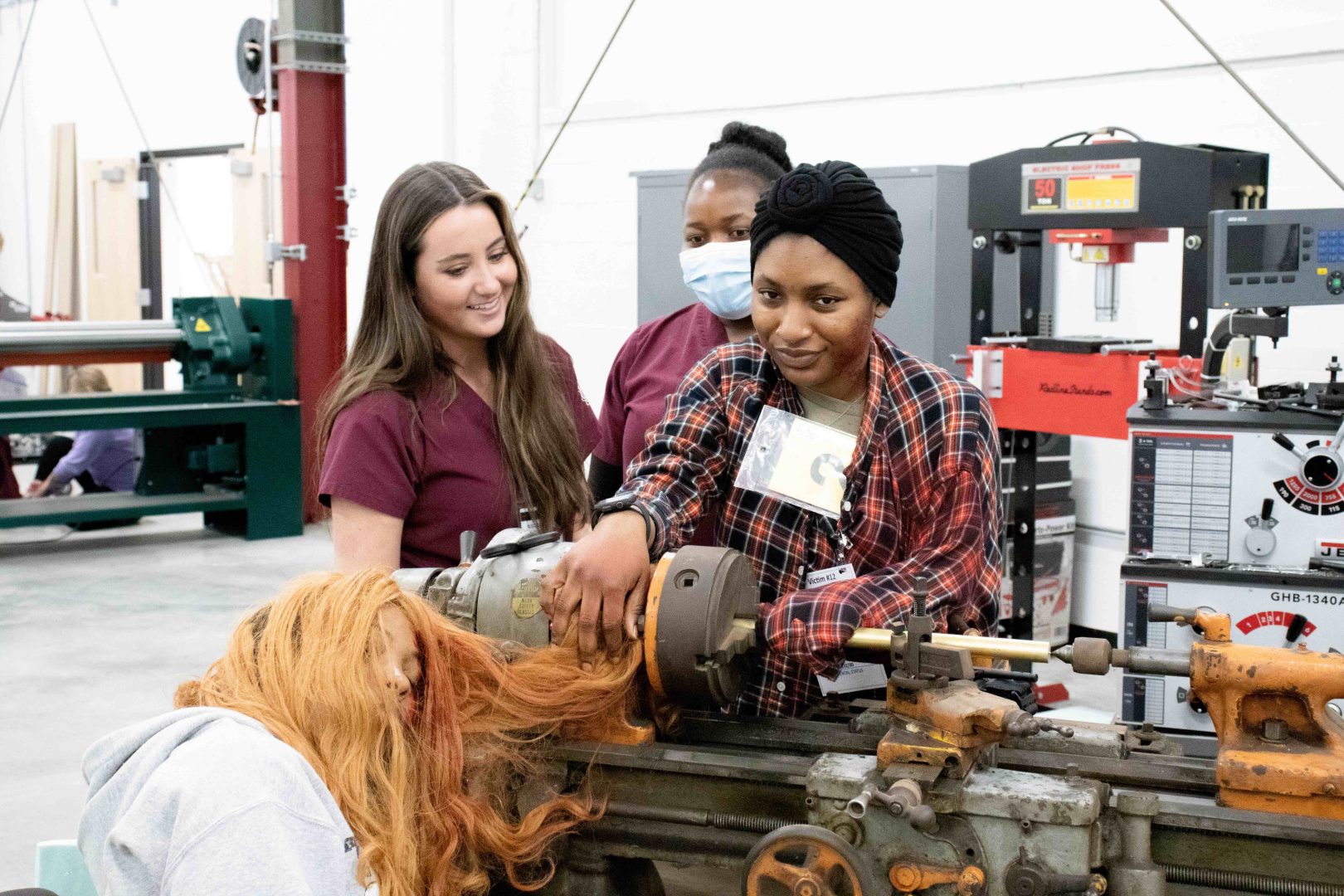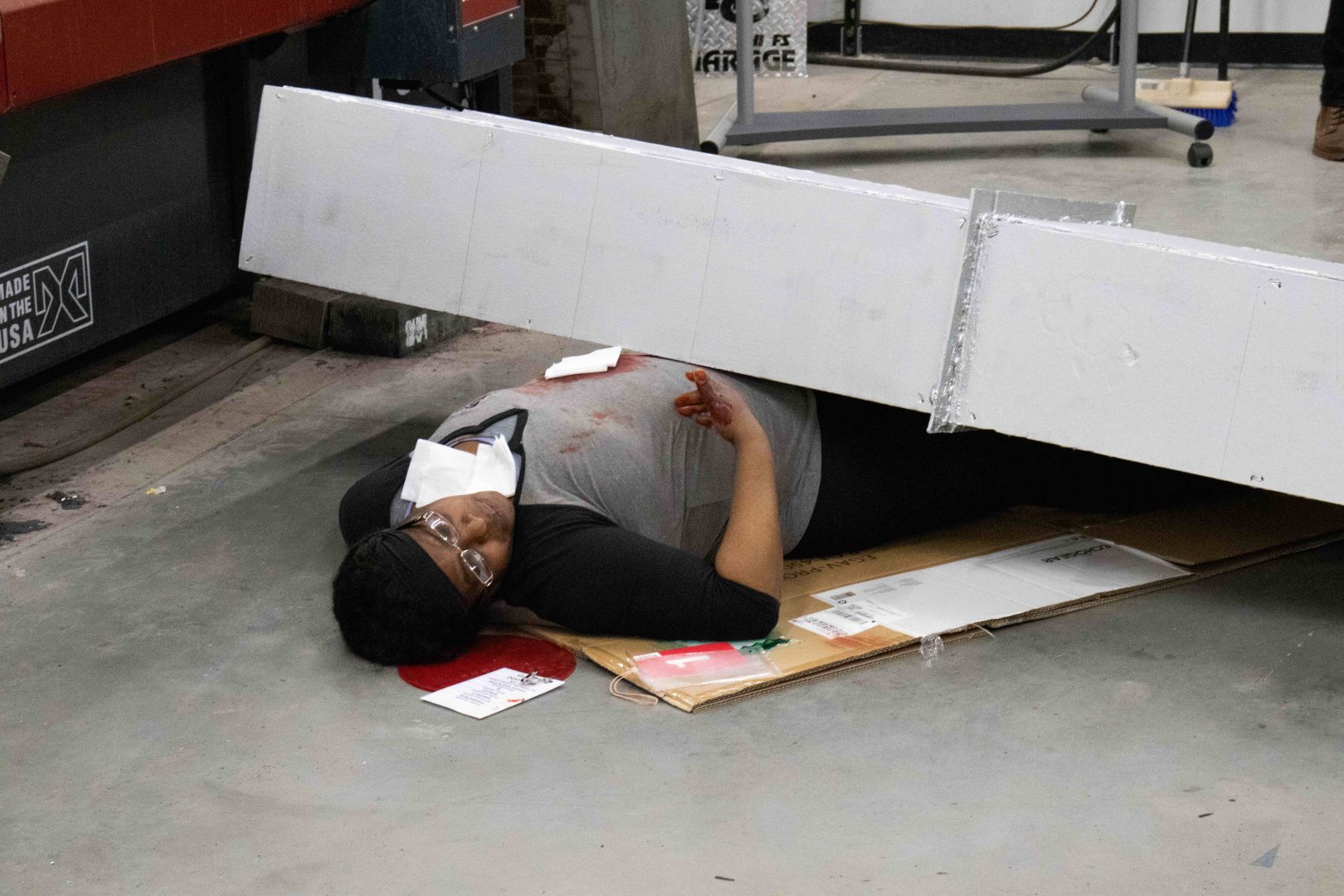Editor’s Note: This story contains accompanying images of a disaster simulation that may be disturbing to some readers. All injuries and props are fake and the simulation was conducted by professionals.
The University of Indianapolis School of Nursing collaborated with the UIndy Police Department and School of Engineering to host a disaster simulation on April 13 in R.B. Annis Hall, according to Manager of Mechanical Systems and Laboratories at the School of Engineering James Emery. The disaster simulated a welding tank explosion and involved sophomore nursing students acting as victims for senior nursing students to assess and triage, Assistant Professor for the School of Nursing Toni Morris said.

The simulation consisted of 26 casualties showing various injuries, including impairments, shrapnel, puncture wounds and also multiple major limb and chest injuries, according to Assistant Professor for the School of Nursing Cathy Miller, who teaches NURB 210: Nursing Health Assessment. The course is a first-semester clinical class, according to UIndy Nursing and consists of sophomores, who made up the casualties in the simulation, Miller said. Students acting as responders in the event were senior nursing majors taking a course Morris teaches, titled NURB 325: Promoting Healthy Communities. Students also acted as responders, which included students training with the police department, as well as three department cadets and three officers, according to UIndy Police Lt. Brandon Pate.
“As part of our course content, they learn what’s called a start triage methodology of how to quickly triage victims if you were
ever to come upon or be involved in a disaster event, or an event where you would have to respond quickly to victims and figure out how to do the most good with little to no resources,” Morris said. “We had that education and didactic training in; they read about it in their assignments and in their textbook.”
The School of Engineering became a part of discussions surrounding the simulation, according to Emery, when UIndy Police and the School of Nursing were collaborating and figuring out scenarios that would involve disaster situations, and the Department of Engineering became part of the conversation. Emery said his role during the simulation was building props for the event with students.
“We had a brainstorming session with a bunch of students that we kind of came up with issues that can happen that we can build,” Emery said. “We’ve 3D printed eyeballs and 3D printed fingers and then, making eight-foot-long sections of AC [air conditioning] duct [which] back in the shop is 30 feet in the air.”
According to Morris, the idea for the simulation came about when she and Miller, who has experience with disaster simulations, collaborated to bring their idea of a simulation to UIndy and presented it to administration. Funding for the event came from a grant received from the Metropolitan Indianapolis-Central Indiana Area Health Education Center (MICI AHEC) and Miller said she wrote the grant in the fall of 2021 and received funding in October of 2021. Though the grant had been received last semester, the School of Nursing and the UIndy Police Department had discussed developing a disaster simulation since December of 2019, according to Miller.
“Toni [Morris] and I both have experience outside of UIndy with these kinds of simulations, and COVID[-19] happened. And then last fall, we were able to come back to the table where it was now safe. We could start planning this again, we brought it in at a much smaller scale. So we started testing nursing,” Miller said. “We just did an in-class simulation, and then I wrote the grant in October of last year, received it from MICI AHEC, and then we were able to purchase everything we moulaged with.”

Some of what the grant paid for, according to Morris, included moulage, or makeup for the simulation. Morris said moulage uses different materials to increase realism as well as simulate different wounds and injuries. The makeup creates a base and then builds upon that and uses different materials like face masks gelatin, Morris said.
“We had a few impalements, and so we were able to safely, and engineering [students] helped quite a bit too, take a long wire and making sure that it’s going to be safe, put against somebody’s skin and use some glue and some makeup to make it really look like it’s impaled somewhere,” Morris said.
According to Pate, the police department analyzed the simulation using a situation manual, which outlines what the event is going to be and then attached to the manual is an elevator guide (EEG). Pate said officers take specific core capabilities that they are looking to test, and for the simulation, it was response communication, and the ability to set parameters, triage and incident command.
“We take whatever deficiencies there are and we submitted an after-action report that shows us where we have areas of growth opportunities to get a little bit better,” Pate said. “The whole thing is an evaluation method to get more efficiency.”
The simulation, Morris said, is a first for the university and in the future, the event will be recreated with different scenarios in the fall and spring semesters. According to Miller, the grant is a returning grant so there will be more simulations. Morris said the Department of Nursing looks to make improvements in the future and running the drill again with different scenarios. Cross collaboration is also important, she said, and that interprofessional education is something that should be integrated into the curriculum.
“We’re very, very excited about the addition of the university police being able to offer some training or have them incorporate training for their cadets, and then the addition of the School of Engineering has been very exciting,” Morris said. “They can bring so much to the table as well. They can analyze processes, they can help make us more efficient.”






